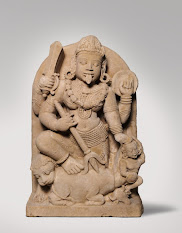Reports are coming in of a seizure in Ukraine of objects that include antiquities, allegedly being prepared for illegal export by industrialists suspected of collaboration with Russia, including the chairman of board of directors of JSC Motor Sich, Vyacheslav Boguslayev (СБУ запобігла вивезенню з України колекційних авто та скіфського золота, які належать президенту "Мотор Січі" Богуслаєву espreso.tv, 24 November 2022 ).
The Security Service of Ukraine has released evidence of treason and collaborationism, namely cooperation with Russia during the ongoing conflict, by the president of JSC "Motor Sich" Vyacheslav Boguslayev, who has been a Russian citizen since 2000. Allegedly, the "Motor Sich" company sold aircraft parts worth UAH 400 million that went to a Russian aircraft repair plant that serves the military-industrial complex of Russia, allowing for the maintenance of helicopters that are destroying Ukrainian critical infrastructure.
Boguslayev was arrested by the court on October 24.
On November 4, all property of the president of JSC "Motor Sich" and the head of the department of foreign economic activities of the company, who are suspected of working in the Russian Federation, were seized. On November 7, Oleksiy Danilov, Secretary of the NSDC, announced that the assets of the companies "Motor Sich", "Zaporizhtransformator", "AvtoKrAZ", "Ukrnafta" and "Ukrtatnafta" were transferred to the Ministry of Defence.
A search ws carried out for the assets of the president of JSC Motor Sich worth hundreds of millions of hryvnias. It is reported that among the items found and confiscated were rare cars, firearms and antiquities. Apparently members of the direction of the company had tried to hide the property on the territory of the company's premises and were intending in future to take it abroad illegally.
During the searches, officials found seven luxury cars, including four rare ones, a cutter, three hunting guns and a rifle, and "a large number of antiquities of European nations" including items of Scythian gold, as well as objects from Classical Antiquity and Kyivan Rus. The photos supplied by Ukrainian authorities show some of the items.
Sythian Gold
Antiquities including Crimean Gothic fibulae and other stuff
An Odd Gold (?) Bowl with Amethysts and Celtic interlace....
A collectable Nazi dagger
The latter we can dismiss. It is a very clearly a crude fake of a type produced in large numbers for the collectors' market (I do not know much about the Ukrainian market for WW2 militaria, so do not know if its a local product, but such things have been turned out by Polish, German and western European fakers and are sold in flea markets and online).
The bowl with interlace and amethyst cabochons is probably intended as a lavebo for use in the liturgy. I'd say it is unlikely to be an antiquity, probably it is nineteenth/twentieth century 'in the style of' Celtic Revival piece from western Europe, but I really do not know, it's not my field.
The rectangular plates and the things in bags look like Scythian mounts, I am rather puzzled by the long case they are stored in. It will be interesting to see if it is claimed they are recent dugups (most Scythian kurhans in the region have been dug into already) or museum thefts.
The neckrings with horse head protomes are probably Hellenistic from the Black Sea region, but have a rather stiff, soapy appearance in the photos. The basket earrings are Medieval Rus'ian (10-13th cent-ish).
The mixed stuff in the fourth photo (in a slide box!) has me puzzling. The top left has openwork silver beads, Medieval 10th-?? century, with rather chunky carnelian beads (not sure the latter are antiquities). Five of the other compartments contain broken and whole Crimean Gothic-type fibulae and buckles. These have me stumped. I'd say from the photos that the ones on the right are modern fakes (very much reminiscent of some of which I have had in my hand in Warsaw) are the broken ones also fakes, broken to make a job lot look more convincing? There is zero doubt about the items in the centre compartment. They are the worst, crappiest brass cast fakes of Penkovska fibulae ever. The industrialist who bought these had no eye. One of them is broken. There is no excuse for this, Ukraine has a small army of antiquity fakers turning out this kind of stuff by the bucket-load, but of a much higher quality, and masquerading as detector finds. They are good at faking the patina too.
So what is this assemblage? To my eye there is a lot here that is questionable as an antiquities dealer's stock, still less a millionaire's stash to preserve/transport his capital.
I do not know anything more about this case than I read in that article and deduce from the photos the Ukrainians have shown us, but as an archaeologist and observer of the antiquities market it looks a bit fishy to me. I'm not going to speculate on what is going on, just going to say that this is another case involving antiquities where all may not be as it seems. This is regrettable as it is difficult enough getting antiquities treated seriously by the authorities anywhere, and it really gets my goat when "antiquities-shock-horror" stories are used to further other ends (Abu Sayyaf being a case in point) when there is a big hoo-haa that in the end leads nowhere.
hat tip: Sam Hardy






























